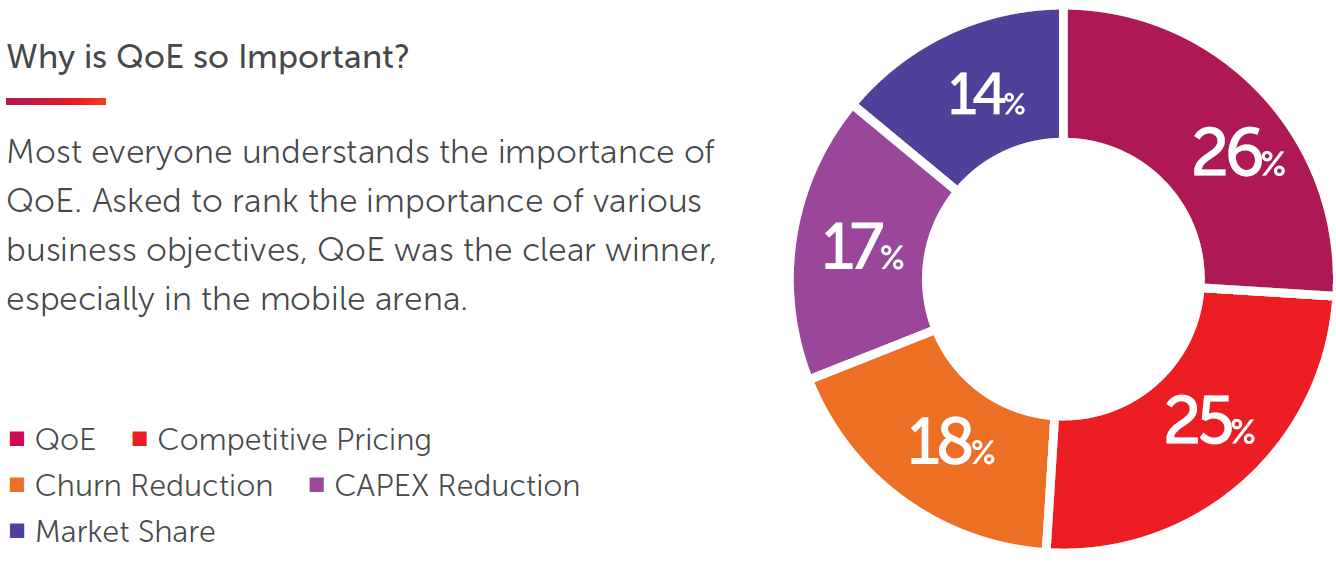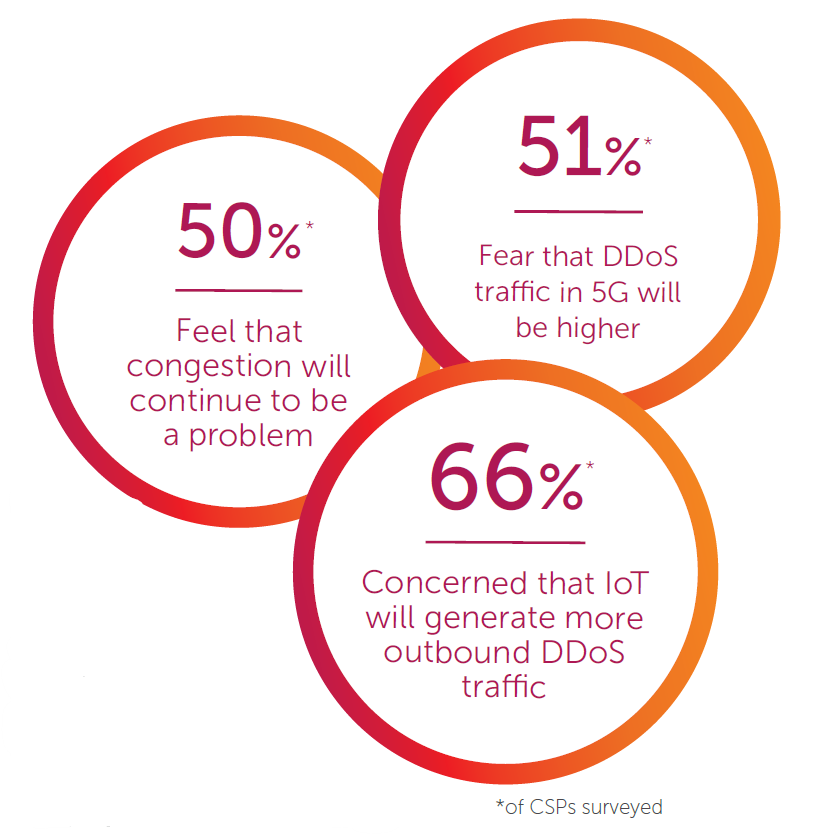Communication Service Providers (CSPs) around the world are spending an enormous amount of money on bandwidth and network equipment as they strive to deliver optimal Quality of Experience (QoE) across a range of existing and planned services.
The recent outpouring of customer complaints about network congestion issues, tainting the long-awaited launch of the Disney+ streaming service, further substantiates the importance of QoE on customer churn. As Michael Schachter, senior product marketing manager at Allot says, even temporary annoyances such as glitches and congestion-caused interruptions in video and browsing can cause lasting damage to customer satisfaction.
Based on a survey conducted among 106 CSPs worldwide, the latest Telco Smart Trends Report from Allot explores what CSPs measure to gauge QoE, how they augment it, what threatens it and instances where they see the most value for it. This year, the report’s release serendipitously coincided with the launch of Disney+, resulting in a real-time case study proving the customer satisfaction research results true: QoE and service reliability reign supreme – even outweighing price.
QoE is more integral to customer satisfaction than price
In fact, 26% of the CSPs who were surveyed rated network QoE as their top business objective. Further, when asked to explain the importance of measuring QoE, it was clear that the customer is indeed king. The overwhelming reason for measuring QoE is to evaluate customer satisfaction (69%), followed by customer retention (19%), which is very closely related.

As it happens, the president of Disney Streaming Services, Michael Paull, is quoted before the launch of Disney+ discussing the top business objective to be customer quality of experience: “When we’re thinking about this product, this experience and the programming, we’re thinking about the end consumer.”
Congestion and DDoS are QoE killers
When CSP networks are congested, quality of experience suffers. Yet identifying and fixing the sources of trouble on the network isn’t so straightforward. The main reason is that common solutions for congestion do not distinguish between different applications and services.
Some applications, like real-time voice, are highly sensitive to performance levels. Others, like file transfer, are barely sensitive at all but are more sensitive to packet loss. Yet, typically, all services are impacted “across the board” when a network becomes too congested; Everything slows down, data packets get randomly dropped and quality suffers. Congestion management is required for optimal QoE.
There is a high concern among CSPs that growing IoT deployment and 5G will create more traffic and a surge of cybersecurity vulnerabilities. In fact, two-thirds of CSPs are very concerned that IoT will generate outbound distributed denial-of-service (DDoS) attacks and more than half fear that 5G is going to further increase DDoS traffic. Currently, a full 59% of CSPs report congestion due to DDoS.
What’s more, DDoS is costing CSPs money even when the network isn’t under direct attack. DDoS is a road hog; just like a freeloader driving illegally in the carpool lane, it wastes resources and impacts QoE.

Browsing takes number one spot in churn concern
CSPs are diligently tracking areas where QoE is deemed most important to customers. Poor QoE in video streaming has historically ranked as the prime concern for causing churn. But this year’s survey shows that browsing takes the number one spot in churn concern.
The survey showed that people have higher expectations for browsing QoE and therefore rate it as the highest quality issue that leads to churn. When asked to rank the activities where poor QoE causes customer churn, CSPs pointed to browsing as the number one reason (77%), followed by content upload (66%), video streaming and voice (tied at 60%) and gaming (36%).
Browsing is considered a fundamental, basic function which means customers expect the experience to be snappy, whereas they are slightly more forgiving with video – even though streaming video is still the underlying cause of most network congestion.
CSPs are keenly aware of the need to become more customer-centric and are prioritising quality of experience for end-users. However, growing network congestion, the launching of new services and the transition to 5G coupled with increasing DDoS traffic – itself fueled by IoT and 5G – require advanced solutions that use machine learning to detect numerous types of traffic, to evaluate end-user QoE and to manage congestion in real-time.
CSPs need visibility of both network performance and customer experience and need to take control of their bandwidth consumption. Combining real-time QoE visibility with the ability to prioritise traffic to deliver optimal QoE at minimal bandwidth cost, allows CSPs to keep their customers satisfied while saving money by avoiding unnecessary network expansion.
The author is Michael Schachter, senior product marketing manager, Allot.
Comment on this article below or via Twitter: @VanillaPlus OR @jcvplus






